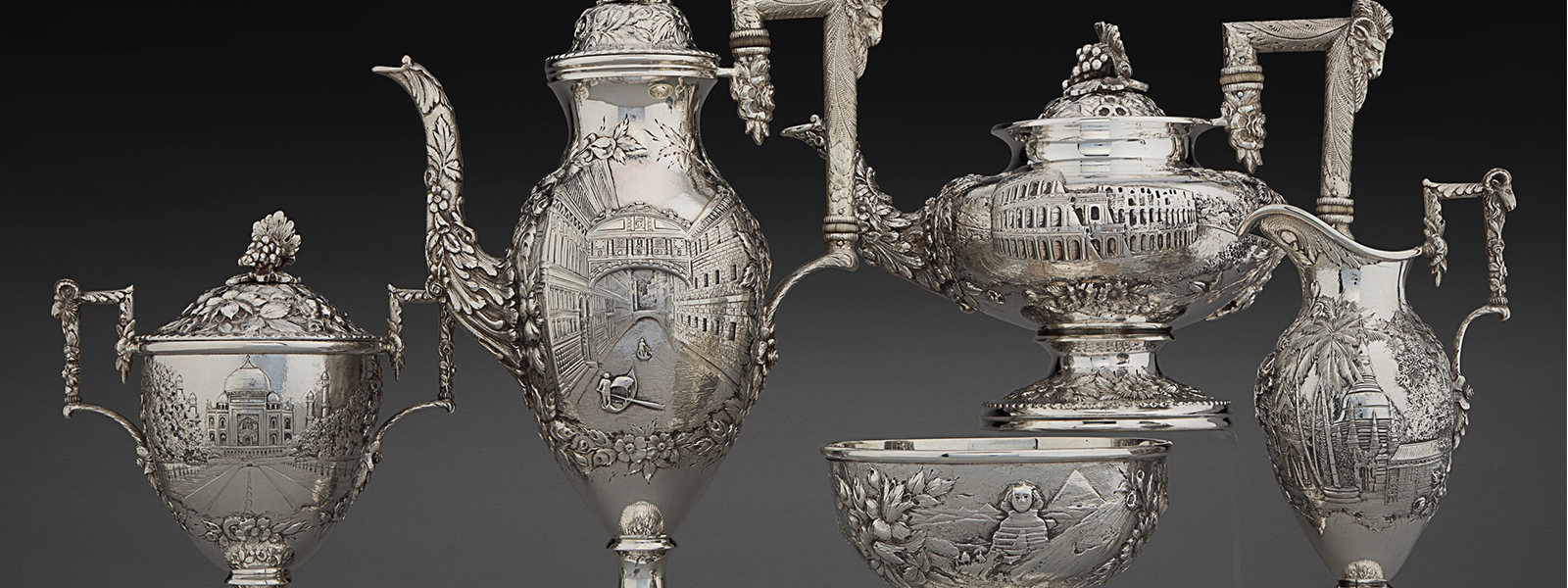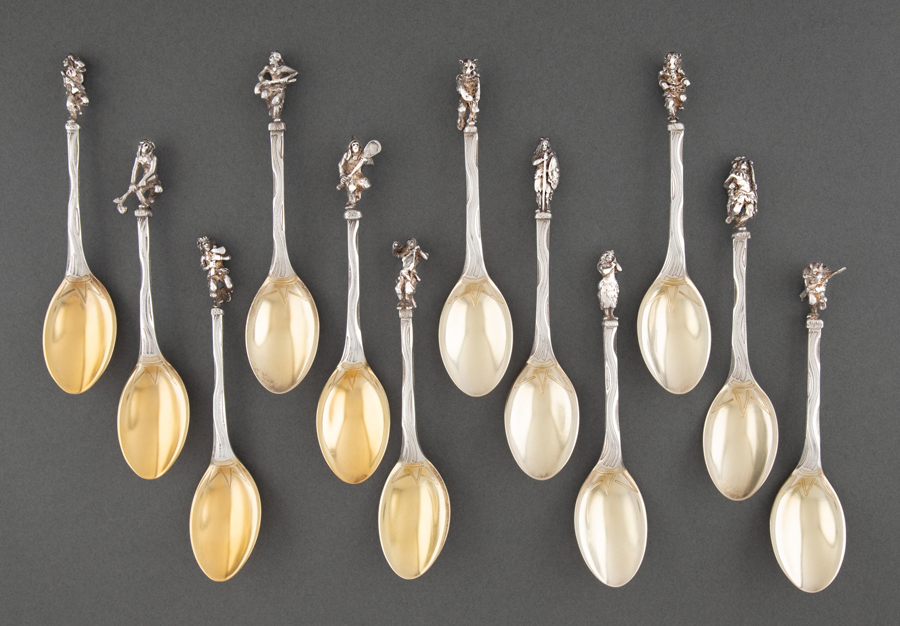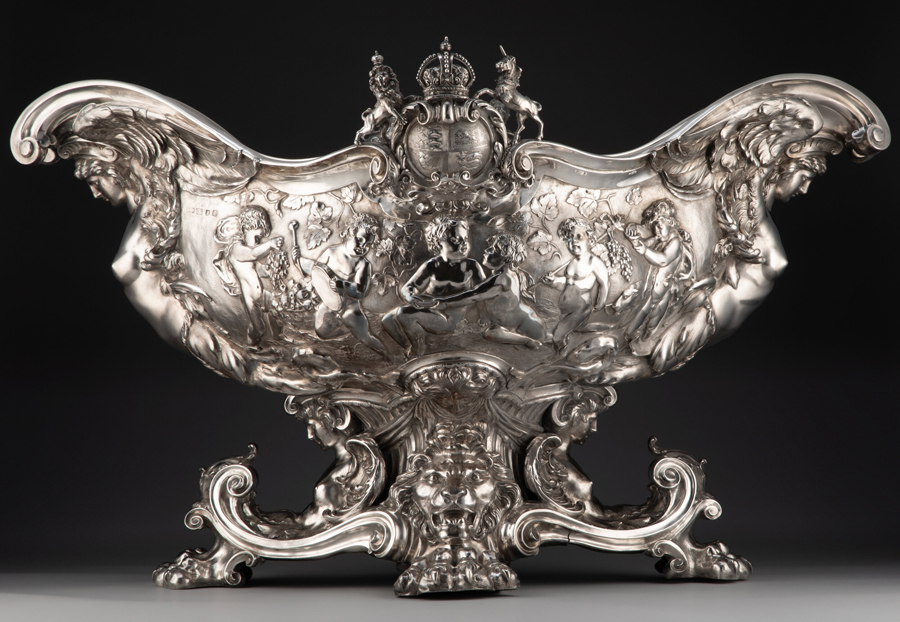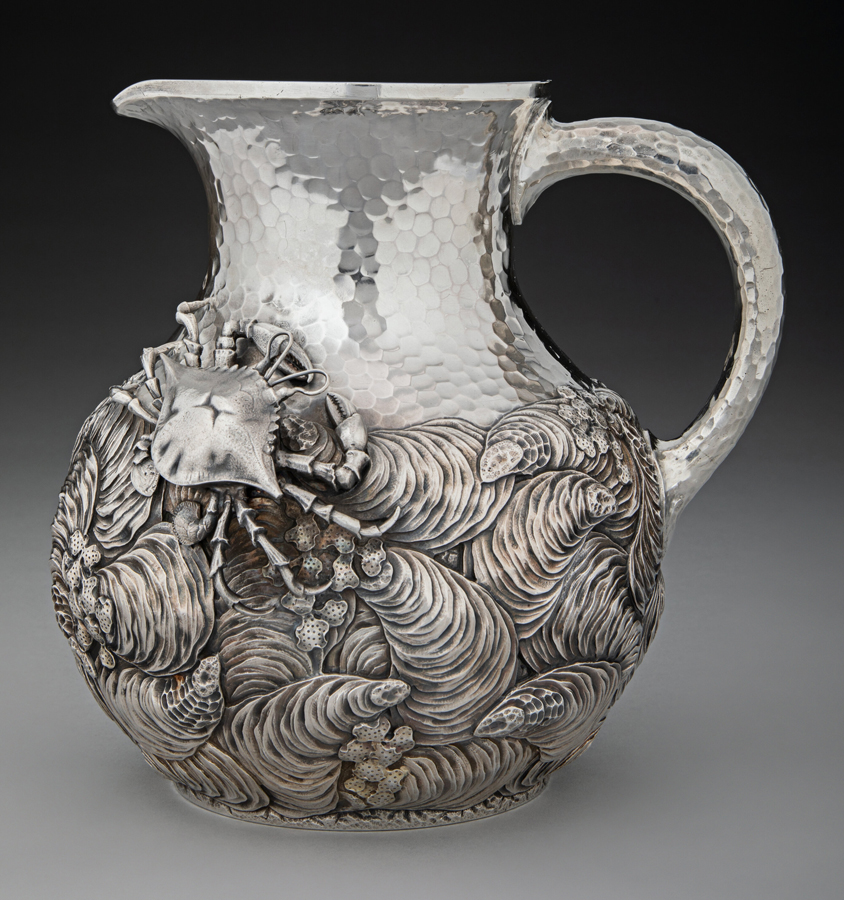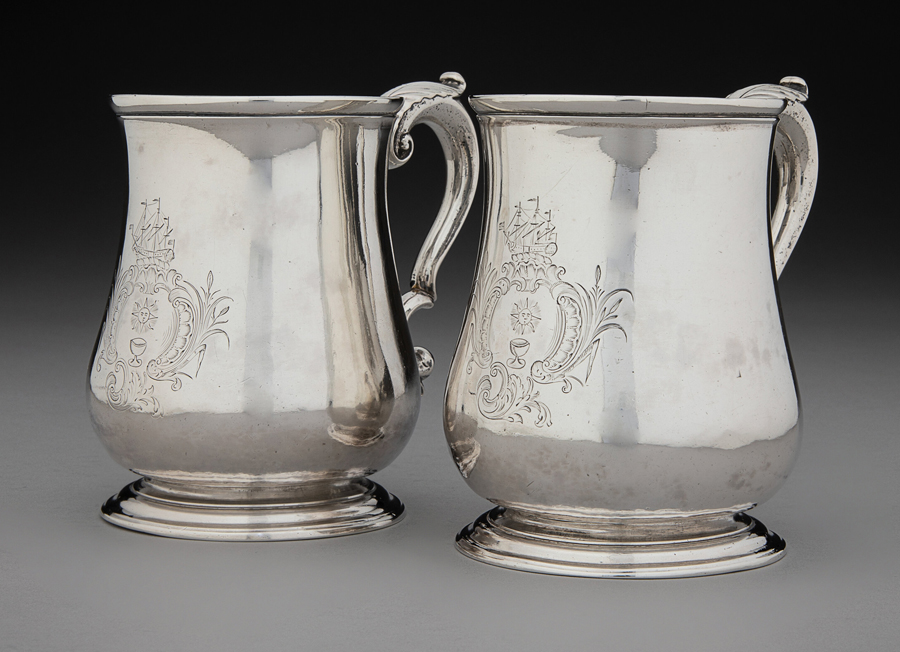FROM TACKLING TARNISH TO DECIPHERING PROVENANCE, HERE’S WHAT YOU NEED TO KNOW TO BUILD A SILVER ASSEMBLAGE THAT SHINES
By Andrew Nodell
The use of silver in currency and everyday objects dates to prehistoric times, with examples found in ancient Rome, Greece and Egypt. Because silver is more reactive than gold, it was more expensive than gold in Egypt until the 15th century B.C. Production of this soft, lustrous chemical element slowed with the fall of the Roman Empire but picked up around the time of Charlemagne and gained further traction as Europeans sought riches in North and South America in the late 15th and early 16th centuries. Known for having the highest reflectivity of any metal on earth, silver has been mined throughout the world, with modern sourcing primarily found in Peru, Mexico, Canada and the American West along with methods of recycling, which accounts for about one-fifth of the current silver supply. Given the material’s rich history, we asked Heritage Auctions’ Vice President of Fine Silver & Decorative Arts, Karen Rigdon, for her expert insight on navigating the world of decorative silver collecting.
A Four-Piece Gorham Mfg. Co. Athenic Pattern Silver Chocolate Service, Providence, Rhode Island, circa 1900. Available in Heritage’s May 16 Fine Silver & Objects of Vertu Signature® Auction.
Buy the Best
As in any collecting category, it is important to buy the best you can afford. “Buying one great piece is better than buying 10 just okay pieces,” Rigdon explains. “With Heritage’s array of auctions, including the May 16 Fine Silver & Objects of Vertu Signature® Auction, you can develop your connoisseurship by paying attention to craftsmanship and condition. Attend silver previews to handle pieces, study the period and maker to understand rarity, and consider the provenance of each piece.”
A Rare Set of 12 Tiffany & Co. American Indian Pattern Partial Gilt Silver Demitasse Spoons, New York, designed 1884. Available in Heritage’s May 16 Fine Silver & Objects of Vertu Signature® Auction.
Know Your Silversmiths
There are many silver traditions and silversmiths to consider depending on your interests and aesthetics, from antiquity to the present day. “If you enjoy the American Gilded Age, keep your eyes on Tiffany & Co.,” Rigdon says. “If your preference is Modernist silver, look at the work of Jean Emile Puiforcat in Paris or Georg Jensen in Copenhagen or the midcentury Taxco silversmiths of Mexico, from William Spratling and Hector Aguilar to Antonio Pineda and Margot de Taxco. From each period and country there are important silversmiths to consider. Discover the best silversmiths according to your interests and become acquainted with their work.” Bottom line: Explore this collecting field and find where you connect personally.
An Important R & S Garrard & Co. Silver Wine Cistern, London, 1903. Available in Heritage’s May 16 Fine Silver & Objects of Vertu Signature® Auction.
New Collector? Not a Problem.
Even if this is your first foray into collecting, be mindful of what catches your eye and what attracts you to the art form of decorative silver. Allow your interests to guide your collecting. Among points to consider, provenance adds to value. “Our May 17 Imperial Fabergé & Russian Works of Art Signature® Auction features objects with Romanoff provenance,” Rigdon notes, “while our May 16 sale includes a massive R & S Garrard & Co. silver wine cistern with British royal provenance. While we do not know for whom the cistern was made, it does bear the coat of arms of the United Kingdom. Its location was shrouded in mystery until 1957 when it was presented as a trophy to the winning horse’s owner in the Michigan Mile, a now-defunct American Thoroughbred horse race. So, begin with the known provenance and dig further.”
Age and rarity are other important considerations. Take, for example, the mid-19th-century epergne, or table centerpiece, marked as Tiffany & Co. that Heritage is offering on May 16. “This is an early piece, made before Tiffany & Co. produced silver,” Rigdon explains. “It is marked with a Gothic M, denoting John C. Moore & Son, which was absorbed into Tiffany & Co. in 1868. The overall form is also rare, as is the Indo-Saracenic pierced work, which was a revivalist architectural style popular with British architects in India during the latter half of the 19th century.”
A Whiting Mfg. Co. Hand-Hammered Japonesque Silver Pitcher, New York, circa 1880. Available in Heritage’s May 16 Fine Silver & Objects of Vertu Signature® Auction.
Care Is Key
Silver should be kept clean. If you follow the advice of Rigdon, keep your silver out and use it daily so that you will need only soap and water to clean it. If there is tarnish buildup, use Herman’s Simply Clean Collectors Silver Polish, a nontoxic cleaner developed by silver restorer and conservationist Jeffrey Herman. Or try Hagerty Silver Foam, which is readily available. But if you choose to present your silver only on special occasions, there are other ways to prevent tarnish. Many collectors keep their silver in Pacific Silvercloth, a cotton flannel that is embedded with silver particles and can be used to line the walls and shelves of a closet but also comes in bag form for individual objects. Rigdon has a warning, however: “Letting tarnish build over the years can lead to permanent surface damage.”
A Pair of Jacob Hurd Coin Silver Canns, Boston, Massachusetts, circa 1745. Available in Heritage’s May 16 Fine Silver & Objects of Vertu Signature® Auction.
Be Aware of Collecting Trends, But Don’t Feel Beholden to Them
Tastes change over the years and from generation to generation. What was popular in the world of collecting half a century ago may have fallen out of vogue in recent years. As with anything, buy what you love, not what is currently in fashion. How have tastes changed in the world of silver collecting over the past few decades? “In general, until the 1980s, American collectors focused on early American, English and Continental silver, looking at the 17th, 18th, and early 19th centuries, and in the work of silversmiths of the day,” Rigdon says. “As tastes expanded, Victorian silver was collected, and then in the fourth quarter of the 20th century, many expanded into 19th-century American silver. Late 19th-century collecting grew as more books were written, exhibitions mounted and prices started to climb at auction and in galleries.”
As for what has been attracting bidders recently, Heritage Auctions set a record for selling a single silver spoon for $32,500 in 2021. The spoon was among nine lots by the American silversmith Paul Revere Jr. from the Donald G. Partrick Collection. In 2023, Heritage sold a rare 1880s Tiffany & Co. Lap-Over-Edge mixed metal flatware service with 135 pieces for $237,500. “Interests are wide-ranging, from early silver to examples of the present day,” Rigdon says. “I see individualism in collecting rather than a communal collecting direction as we saw through the 20th century.”
For inquiries regarding Heritage’s May 16 Fine Silver & Objects of Vertu Signature® Auction, contact Karen Rigdon at KarenR@HA.com or 214.409.1723.
 ANDREW NODELL is a contributor to Intelligent Collector.
ANDREW NODELL is a contributor to Intelligent Collector.

